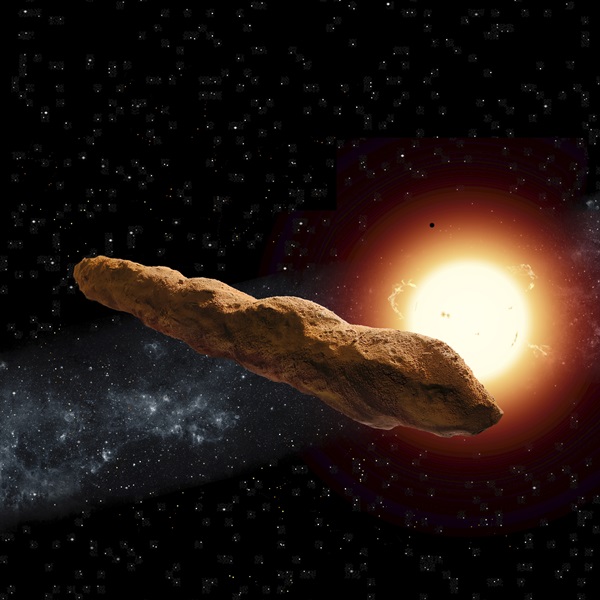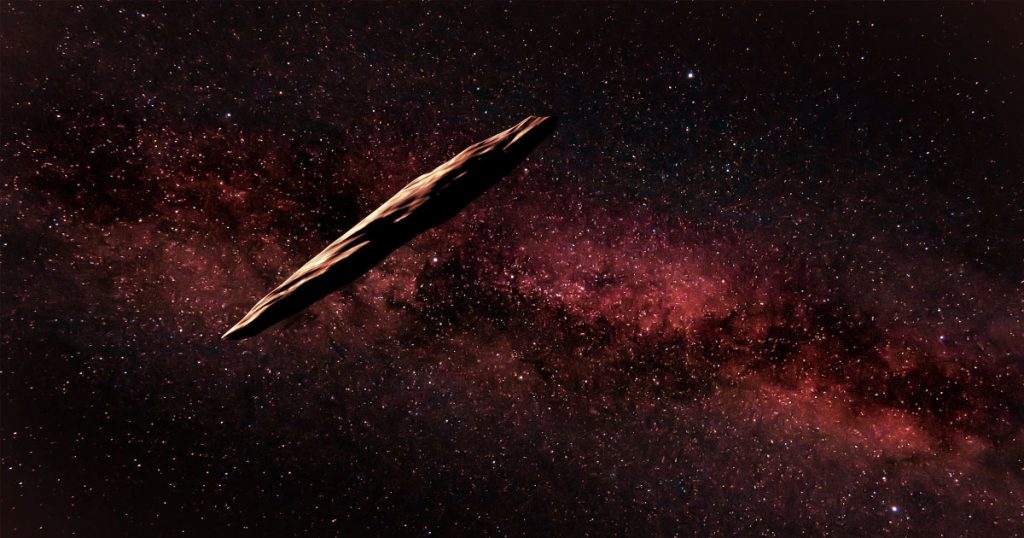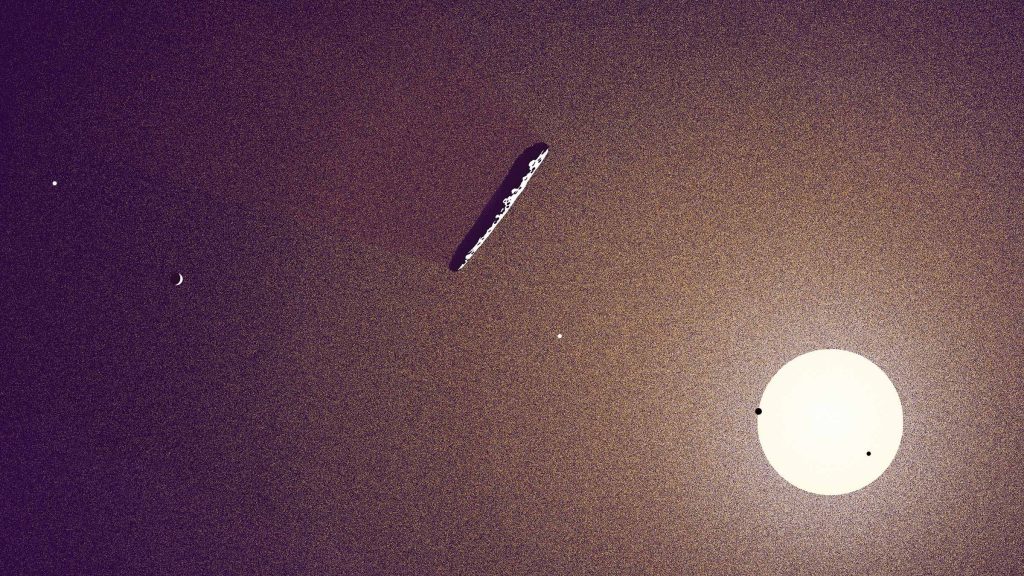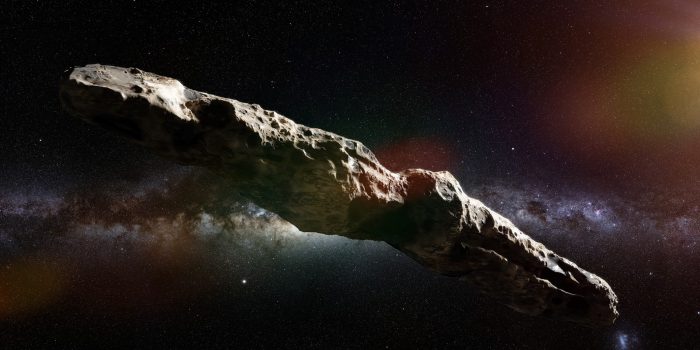A space mission to study the strange cosmic object known as ‘Oumuamua,’ which has interested astronomers for years and has been hypothetically connected to extraterrestrial life, has been suggested by scientists.
In 2017, Oumuamua was discovered by Robert Weryk, an astronomer stationed at the Universe of Hawaii, when it went through our solar system and sling-shotted past the sun at approximately 200,000 miles per hour.
The object is mysterious, as it has defied categorization as a comet or an asteroid. One of the strangest aspects of ‘Oumuamua is its form, which NASA describes as cigar-like. It is almost ten times as long as it is broad, unlike any other object seen in the solar system.

Astronomers further verified that ‘Oumuamua was the first observed object from another star to reach our solar system. However, as soon as the object arrived, it was on its way out, traveling through the orbits of Mars, Jupiter in 2018, and Saturn in 2019.
Astronomers are still wondering where ‘Oumuamua came from, with aliens being one possibility. Some scientists have suggested sending a spacecraft to the object to figure out what it is, but considering how rapidly it travels away from us, this may be tough.
A Solar Oberth Maneuver, which entails sling-shotting a spaceship around the sun to catch ‘Oumuamua in a few decades, is one option, but it comes with risks, including the need for a heat shield.

Last Monday, under a new study, scientists proposed a means of reaching the unusual object using the gravitational attraction of Venus, Earth, and Jupiter, meaning that a probe may get ‘Oumuamua within the next 26 years or so while avoiding the hazards of a solar flyby. It might be ready as early as 2028, according to the researchers. However, it should be underlined that the study has not yet been peer-reviewed.
Extraterrestrial beings are almost always mentioned in certain ideas about ‘Oumuamua’s origins. While this may appear unreasonable, Avi Loeb, Frank B. Baird Jr., Harvard University professor of science and astrophysics, is one of the most well-known proponents of this viewpoint.
Loeb co-authored a research in The Astrophysical Journal in 2018 that looked into the possible origins of the space object and carefully explored the idea that it was “of an artificial origin.”
“Oumuamua might be a lightsail,” which is a device that utilizes light from the sun or other stars to propel it across space. This may explain the object’s odd form, as well as the fact that it is highly reflective and seems to travel through space without losing a tail of material as comets do, according to Loeb.

Perhaps it isn’t the most interesting proposal in Loeb’s study. “Alternatively, a more exotic alternative is that ‘Oumuamua may be a fully working probe dispatched purposely to Earth’s proximity by an extraterrestrial civilization,” according to another piece in Loeb’s report.
Last week’s draft report suggesting a 2028 trip to the space object was “interesting,” but Loeb expressed worries about the accompanying complexity in a statement.
Instead, Loeb feels that waiting until scientists discover another ‘Oumuamua-like object in the solar system and then traveling there is a good bet. This is the goal of the Galileo Project, which he heads.
“The goal is to take a close-up photograph that would reveal whether it is an unusual rock or extraterrestrial equipment because a picture is worth a thousand words,” he said.
“In other words, ‘To rendezvous or not to rendezvous?’ is a billion-dollar question,” Loeb wrote in December 2021.


